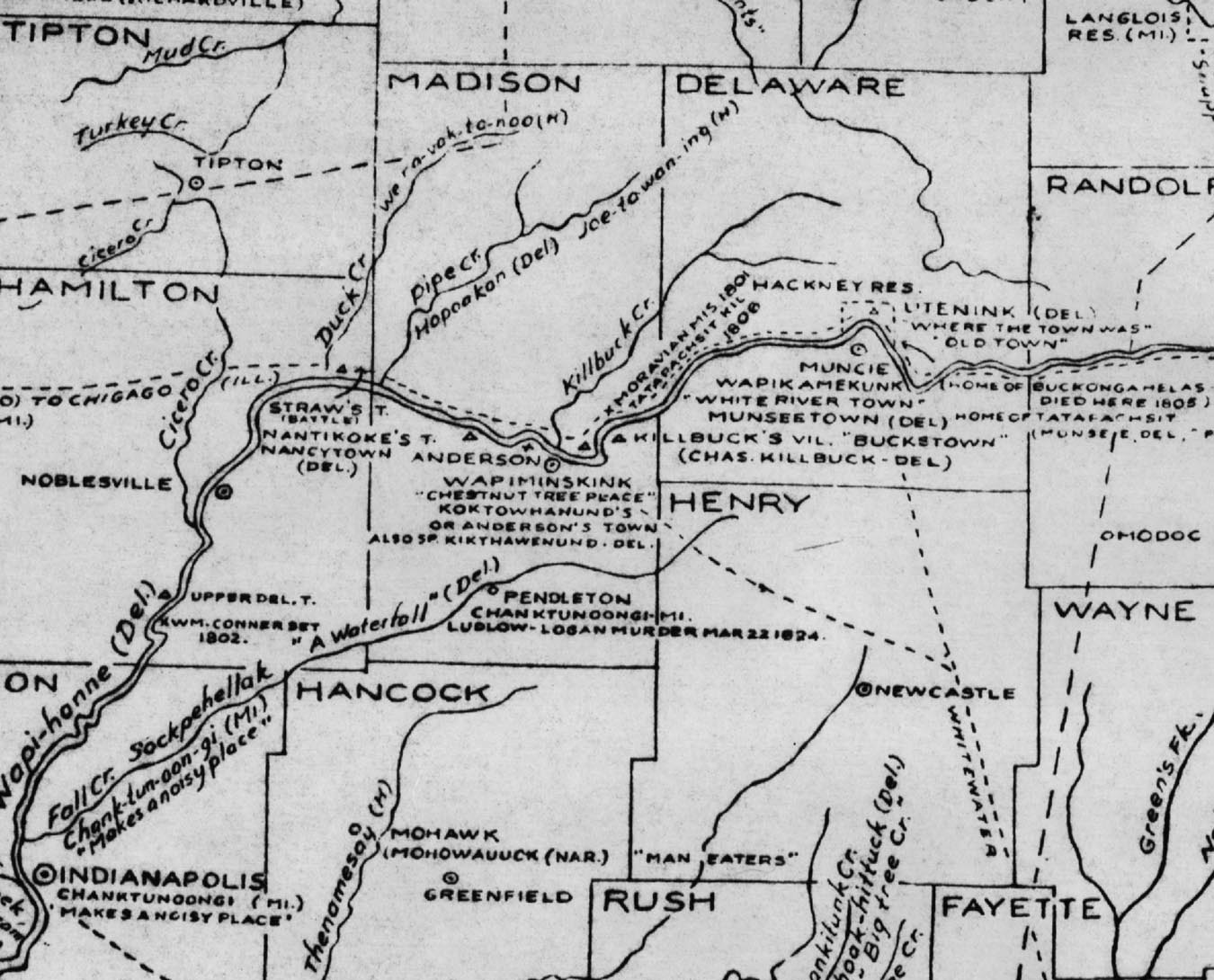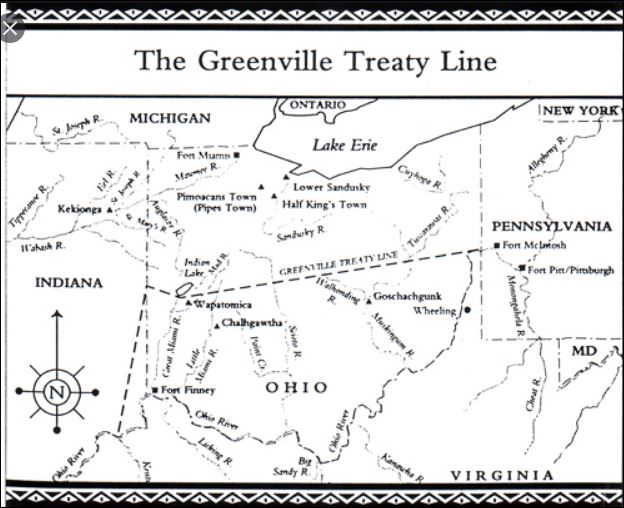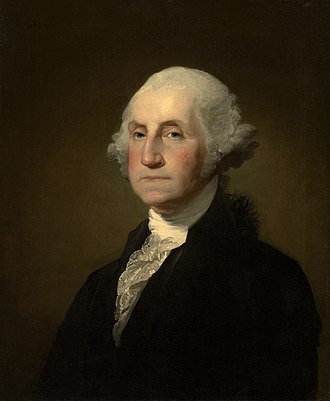Delaware Indians settled around present-day Yorktown. After 1800 there is no record of fighting with native Americans in our area. When Oliver H. Smith platted Yorktown, he named the town for the “York Indians”. The native Americans who settled along the White River, were part of the Lenape/Delaware Tribe coming originally from the area that became New York stopping in Ohio on their journey.
1795 The Treaty of Greenville
The Treaty of Greenville was negotiated to end the violence and establish lands for the tribes. The Miami tribes were given the lands in the Wabash River watershed with the exception of the White River which was to be occupied by the Delawares. This was but a temporary measure for as the white Americans pushed west the agreement was nullified.
1791 Defeat of St. Clair
Tribal warriors led by Mihšihkinaahkwa (Little Turtle) of the Miami and Weyapiersenwah (Blue Jacket) of the Shawnee led the defeat of the American Army at St. Clair’s. The American army lost approximately 1,000 men, the largest defeat between tribal forces and the American Army.
Between 1774 and 1794, Indian villages in New York, Pennsylvania, Indiana, and Ohio were constantly attacked by the American army and militias. The native Americans saw 100 villages burned and untold violence and casualties.
1794 Battle of Fallen Timbers
The Battle of Fallen Timbers effectively ended the Northwest Indian War led by General “Mad Anthony” Wayne. Ft. Wayne and Wayne County are named for him.
The Battle of Fallen Timbers (20 August 1794) was the final battle of the Northwest Indian War, a struggle between Western Confederacy of Native American tribes with the British, fighting against the newly formed United States. This was the battle for control of the Northwest Territory, of which present-day Indiana was a part.
1789-1797 George Washington served as the 1st US president
George Washington (February 22, 1732– December 14, 1799) served as the first president of the United States from 1789 to 1797. As a General Washington, he led Patriot forces to victory in the Revolutionary War. In 1787, he presided at the Constitutional Convention which established the U.S. Constitution and a federal government.
1788 Administration of the Northwest Territory Begins
Governor Arthur St. Clair arrived within the Northwest Territory at Marietta, Ohio to begin administration of civil duties within the territory. St. Clair formally established the territorial government on July 15, 1788. The settlement of Losantiville was renamed by St. Clair to “Cincinnati” in 1790 and he moved the administrative and military center of the territory to Fort Washington.
Fort Washington was in downtown Cincinnati, providing easy access to the Ohio River. The Fort was the major staging area for settlers, troops and supplies during the settlement of the Northwest Territory.
The first written criminal and civil laws of the Northwest Territory were established. Thirty-seven different laws were written with the understanding that the laws had to have been passed previously in one of the thirteen original states. A structured court system was established.
Many early trips west began in Marietta or Cincinnati. The first part of Indiana to be settled was in the south and southwest, along the rivers.
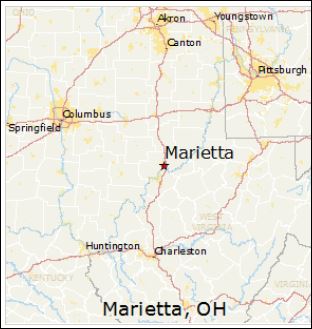
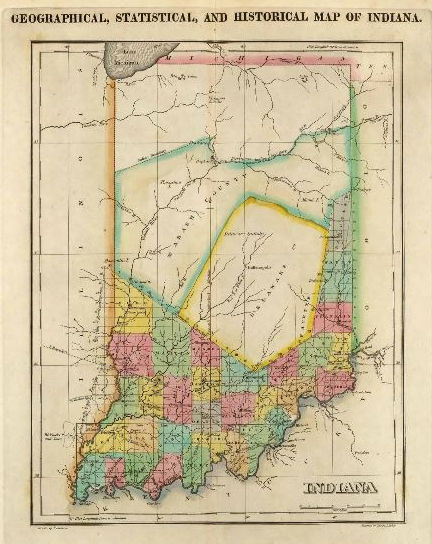
The settlement of Indiana happened primarily from the rivers. The south and southwestern parts of Indiana were divided into counties first. Fort Vincennes was established by the French between 1731-1732. The Fort was later was occupied by the British who called it Sackville before it became a possession of the U.S.
Vincennes was used to muster soldiers to fight in the Battle of Tippecanoe in 1811. The soldiers marched along the Wabash to near the confluence of the Tippecanoe and Wabash Rivers. The area is known today as Battle Ground, Indiana. It was there that General William Henry Harrison met the confederacy of tribes led by Tenskwatawa, “The Prophet” for battle. Tenskwatawa was the brother of the great Shawnee warrior, Tecumseh, who was not at the battle.
Vincennes was the first capital of Indiana Territory until it was moved to Corydon on May 1, 1813.
1787 Northwest Territory Established
The Northwest Territory was established by the Northwest Ordinance on lands that that later became Indiana, Ohio, Illinois, Michigan, Wisconsin and part of Minnesota. The territory marked the the nation’s first post-colonial organized territory. The territory ceased to exist on March 1, 1803 when other territories were made from the land it contained.
At first, the land in the Territory was absorbed first into Indiana Territory and Ohio. Indiana territory was much larger than the state of Indiana today. Indiana Territory existed from July 4, 1800, to December 11, 1816, ending when Indiana became a state.
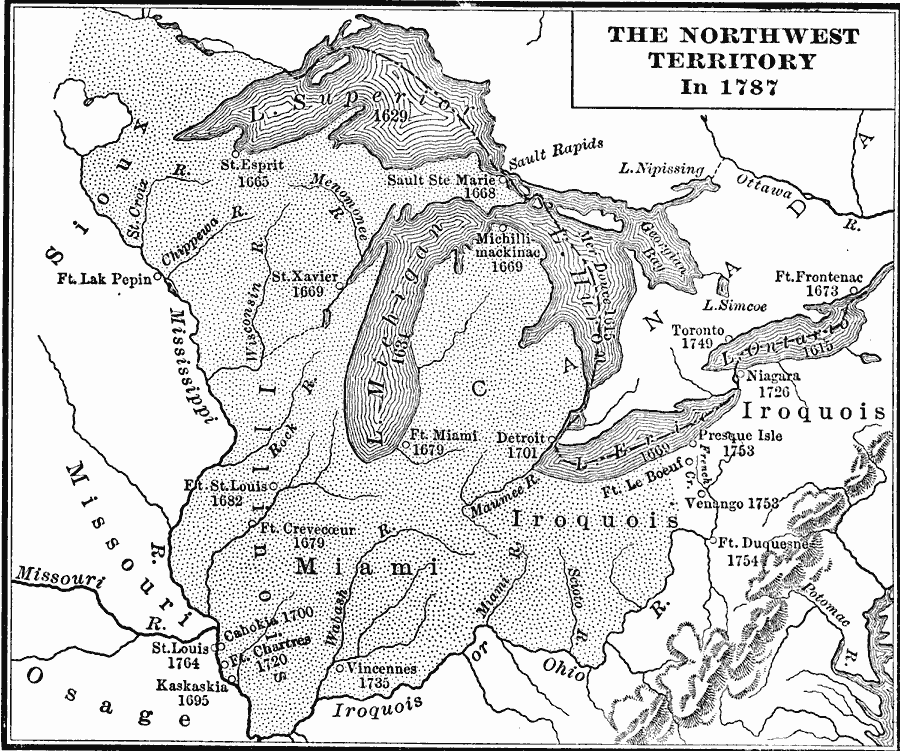
Book: Charles Kendall Adams, A History of the United States (Boston, MA: Allyn and Bacon, 1909) pg 189; Map Credit: Courtesy the private collection of Roy Winkelman
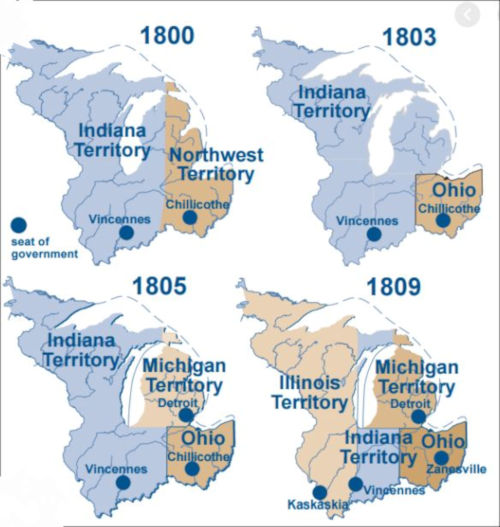
Map Courtesy of: Indiana History Blog, (blog.history.in.gov)
1778 The Northwest Territory is Won for the Patriots
George Rogers Clark marched a militia of mostly sympathetic Canadian volunteers through present day Ohio and Indiana to Illinois in 1778. Clark won what became the Northwest Territory for the patriots with the Siege of Fort Vincennes (also known as the Siege of Fort Sackville or the Battle of Vincennes) to help end the U.S. Revolutionary War.

